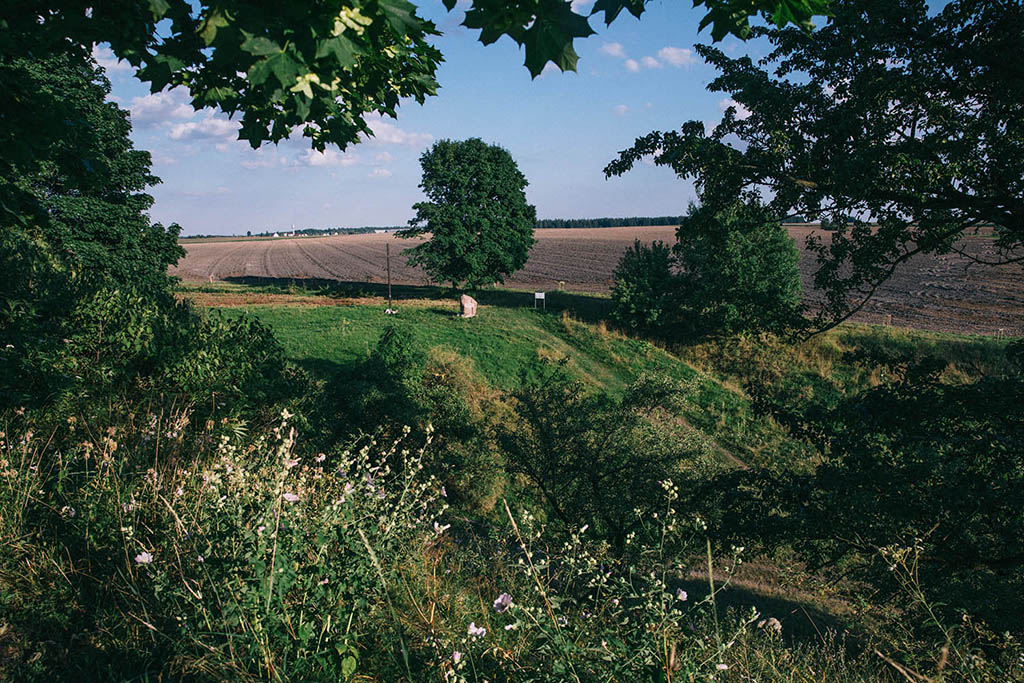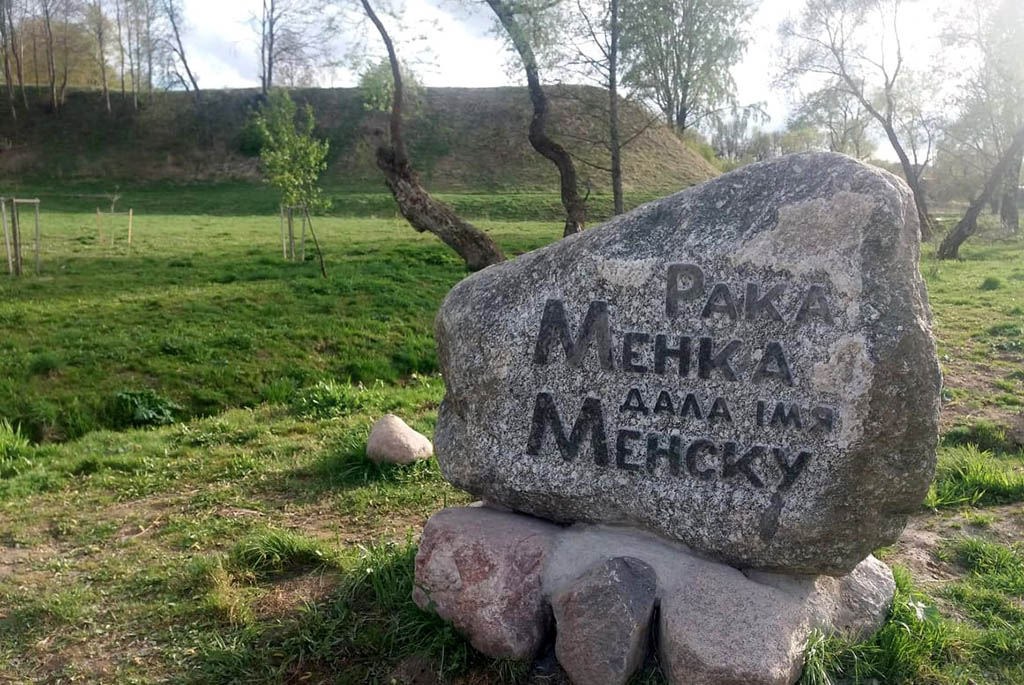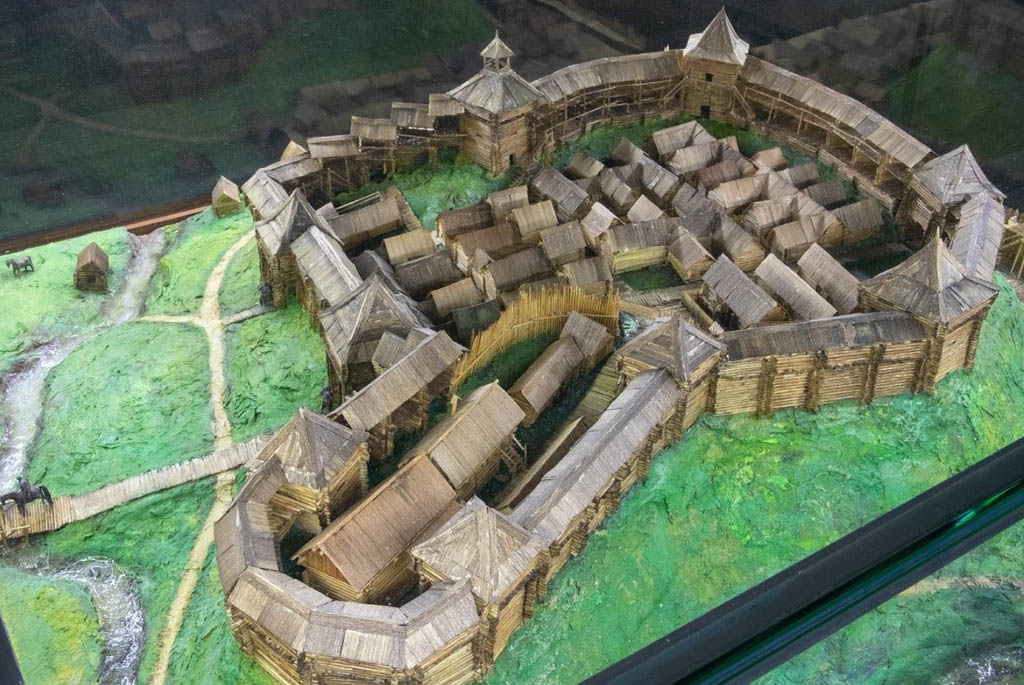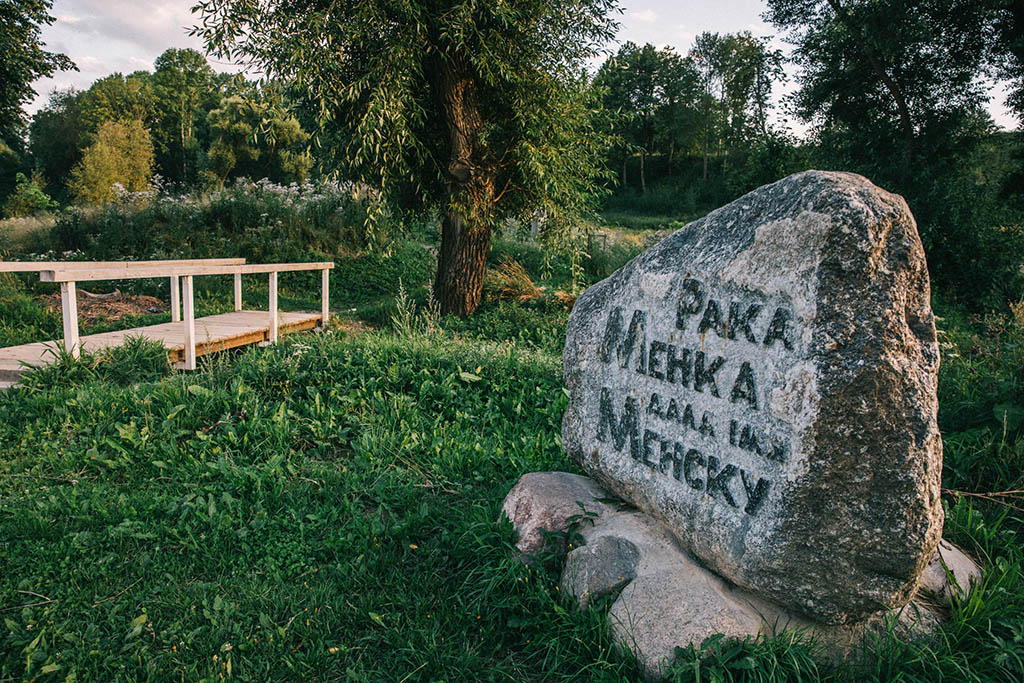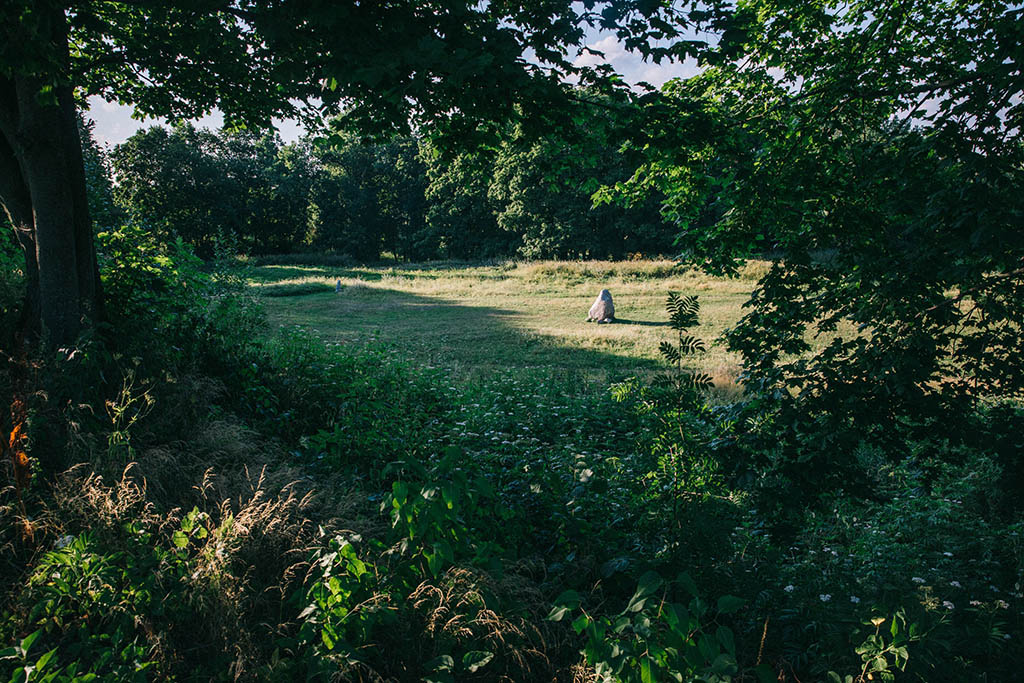The first mentions of Minsk date back to 1067, in the context of the Battle on the Nemiga River. But numerous archaeological finds from the 20th century indicate that the city initially emerged where the Dunay brook flowed into the Menka River. Now, Menka itself has turned into a small brook no more than one and a half meters wide. But in the 9th century, it was a full-fledged navigable river, on the bank of which a settlement was located. It was surrounded by densely concentrated human settlements. Currently, there is a village here, which is also called "Gorodishche" (Settlement). In the vicinity of the village, archaeologists have found jewelry, ingots of colored metals, ceramic products, buttons, belt overlays, remnants of utensils and weapons, and coins dated back to the 9th century. These findings suggest that life was bustling here in the 9th-11th centuries: trade was conducted, artisans worked, and trade ships sailed along the Menka.
The ancient settlement itself occupies a small area. But it represented only the central part of the settlement. The houses of the townspeople were located throughout the territory of the modern village of Gorodishche. It was a full-fledged city, surrounded by earth fortifications and high walls. It occupied about 40 hectares and at that time was the largest early feudal settlement on the lands of modern Belarus.
In the 11th century, Minsk was relocated to the confluence of the Svisloch and Nemiga rivers. There are different versions of why this happened. The most common one suggests that in 1067, Mensk, which was then part of the Polotsk Principality, was captured and burned by the troops of the Kiev princes - the Yaroslavich brothers. After this event, it was decided to move the city to a more fortified place.
After the relocation of Mensk to Nemiga, the bank of the Menka ceased to be the center of a large settlement, but it did not completely become deserted. Archaeological excavations show that life continued here. From the chronicles, it is known that in the 16th century, a large settlement reappeared in this place, which was called Gorodishche.
What is located at the site of the ancient settlement?
Currently, the Menka settlement has been assigned the status of historical and cultural value. On its territory, you can see a castle mound surrounded by millennium-old earth fortifications that have survived to this day. These elevations are not natural features, but man-made constructs, with oak logs forming the base of the earthen ramparts. On one of the elevations, there is an observation deck, from which it is easy to imagine what Minsk looked like at the end of the 10th - beginning of the 11th century.
In the center of the castle mound, there is a memorial boulder in honor of the city's foundation. The inscription on it states that it was here that Minsk began to emerge in the 10th century. Information stands have been installed on the territory of the castle mound, from which you can learn about the history of this place.
In 2020, near the Menka Castle Mound, the "Stary Mensk" (Old Mensk) manor-museum was opened. The museum's exhibition features historical artifacts from the 10th-11th centuries, found during archaeological excavations. Some of the antiquities were discovered literally under the walls of the museum. Among the interesting exhibits are:
- A model of the 11th century castle mound, which allows you to imagine what the settlement looked like in ancient times.
- A life-sized image of the cross of Euphrosyne of Polotsk.
- The oldest chess piece in Eastern Europe - a knight, made from moose antler. Its origin is dated back to the early 11th century. You can see a stone installation dedicated to this figure at the site of the settlement.
To walk on the land once tread by Vseslav the Sorcerer and see the birthplace of our capital, you need to get to the village of Gorodishche via the N8931 road. From Minsk, buses and minibuses also regularly run to Gorodishche.
